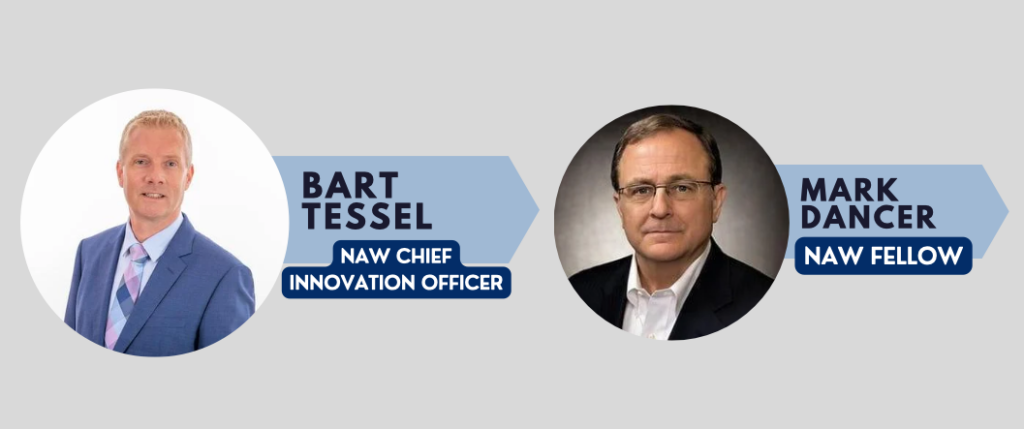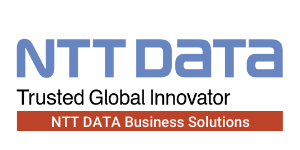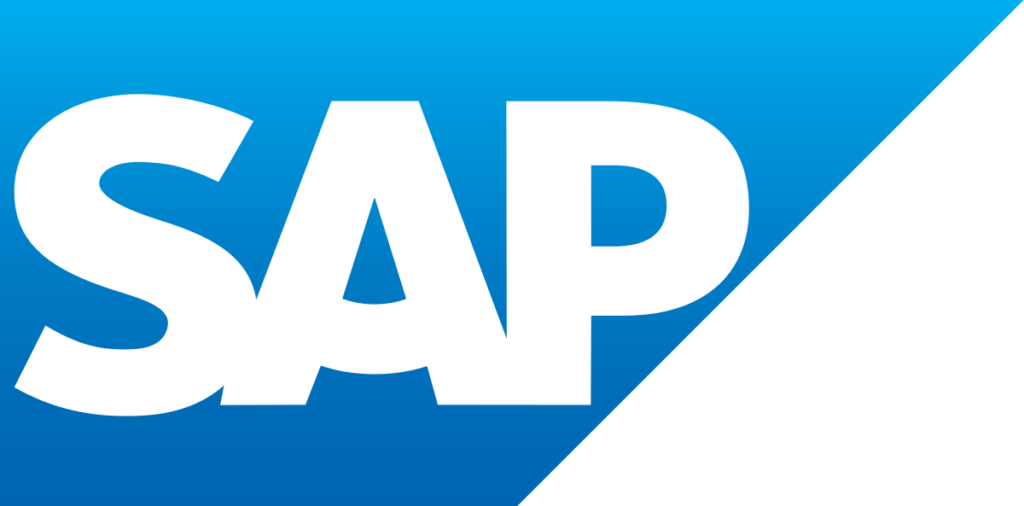Can a clear sense of their company’s purpose help distributor innovators embrace system-changing ideas to radically reinvent distribution business models?
By: Bart Tessel and Mark Dancer

I am excited to kick off and lead our new Facing the Forces of Change® initiative. We will seek insights from the front lines of technology, economic forces, and social change, then explore opportunities for distributors to lead with foresight, resolve, and innovation. We will share our work as we go through blog posts (like this one!), live chats, panel discussions, and social media. Throughout my distribution career, I have found that a clear sense of purpose is an essential North Star for serving customers, guiding leaders, and engaging employees. And purpose is also critical for innovation. Innovating around purpose enables distributors to see through barriers and fight for change. As we begin our new Facing the Forces of Change initiative, we invite all distributors, and distribution’s stakeholders, to read our ideas below, share your comments, and join our work.
Bart Tessel, NAW Chief Innovation Officer

I am honored to continue working for distributors as the author and architect of the Facing the Forces of Change platform. In Innovate to Dominate, we found promise and problems for distributors in the digital age. By helping customers transform and innovate, distributors may reshape the value chain, usher in the future of work, and revitalize our economy and society. But there’s a problem. Leaders are not enabled by an innovation framework designed for distributors and worthy of the unprecedented challenges and opportunities created by digital technologies, geopolitical shifts, generational aspirations, and a supply chain in crisis. Our Facing the Forces of Change initiative will address these opportunities by tapping into the experience and wisdom of distributors, enabled by foresight and a commitment to lean in and do the right thing for customers, communities, and partners. And I agree with Bart; launching our effort by exploring distribution’s current and future purpose is the right place to begin.
Mark Dancer, NAW Fellow and Distribution Futurist
Exploring distribution’s purpose in the digital age
Purpose is problematic. Many distributor leaders are embracing purpose to strengthen their organization’s culture, but practical or measurable benefits can be elusive. I’m looking for solutions, because I believe that companies that operate with purpose have an advantage in pursuing game-changing solutions. Purpose puts companies on a mission to make things better for customers and communities. A strong sense of purpose can help innovators connect abstract ideas with real customer benefits. That’s my theory, anyway, and I’m searching for insights and experiences to back it up. My search brought me to an excellent Harvard Business Review article,“The Messy but Essential Pursuit of Purpose,” by Ranjay Gulati, and an equally excellent discussion of his work in an HBR IdeaCast episode. Gulati has a book Deep Purpose: The Heart and Soul of High-Performance Companies.
In this blog post, I dig into Gulati’s work, distilling ideas for innovators and the future of distribution. I start by explaining the need for purpose as an essential element of innovation by sharing a roadblock I have encountered as I try to follow through on game-changing innovation ideas. Then, I push to build an innovator’s understanding of purpose, highlighting purpose as an ingredient of business model innovation, and pointing out that the pursuit of business purpose is an ongoing journey, and a difficult one at that. I close with questions for every innovator as a gut check—are you acting on your best principles, and is purpose part of your everyday work? I hope that this edition is an important first step for integrating purpose with innovation. Moreover, I hope that purpose helps innovators bring about the future of distribution in ways that are bold, dramatic, beneficial, and profitable. Without further ado, let’s get started.
What do network effects and physical stores have in common?
At first glance, very little. Network effects are the province of digital platforms like ride-sharing apps and online marketplaces and are generally defined as users creating value for other users. Uber and Lyft connect users that have cars with users that need to get somewhere. Amazon and Alibaba connect users with things to sell to other users looking for something to buy. On both, users create value for each other by providing reviews, ratings, a wide range of intimate data, and ultimately scale. In distribution, physical stores are primarily spaces at distributors and dealers where users can make a purchase, pick up a product from a will call counter or a locker, get answers to questions, rent equipment or get a repair, and so on. Network effects are brand new, and physical stores are old hat.
I have written about creating network effects and repurposing physical stores as game-changing innovation opportunities and discussed possibilities with many distributor innovators. Most are curious and sense opportunity, but struggle to embrace the ideas with certainty. Pushing the conversation forward, I hear a common refrain, “I get it. I can see why they might be right for some companies, but why are they right for mine?” I have no answer, but I push ahead, asking, “Why wouldn’t one or the other be right? You see the possibilities, but you won’t embrace the idea. What’s wrong with this picture?” And there, the conversation dies.
It seems to me that it is uncertainty itself that stops otherwise resolute innovators in their tracks. I think purpose can provide the necessary certainty, but only if a company’s purpose is understood and developed as a business asset. In my research for Distribution Leans In, I found that distributor leaders innovated for customers during the pandemic because the pandemic gave them purpose. Distributors helped customers survive lockdowns because it was the right thing to do. Without the pandemic, many innovations would not have been offered, or offered at a slower pace and at a later time. During the pandemic, purpose powered innovation.
If purpose powered innovations during the pandemic, why doesn’t purpose do the same in the absence of an external call to action? Reading Gulati, I learned the hard truth that most companies operate without a distinct and heartfelt purpose. They operate as business models invented by others. They improve by copying best practices approved by others. They survive because others—outside disruptors—have not offered something better to customers. Mostly, companies drift along, rising and falling with the economy, and failing to come up with system-changing innovations because the sad truth is that they don’t need to.
What network effects and reimagined physical stores have in common is that innovators, guided by purpose, do not see them as game-changing opportunities. But, armed with purpose, some companies will see possibilities. And they will innovate. Over time, as their innovations become common practices, other less purpose-driven companies will follow. Leaders and innovators act on purpose. And companies that seek to become leaders can get there by finding their purpose. Gulati shows them how.
Understanding your company’s purpose
Gulati’s article gets the ball rolling by exploring the challenges of leading with purpose as: “Most forward-thinking executives have embraced the notion that purpose-driven companies can solve social and environmental problems while generating wealth, creating win-win outcomes that benefit everyone. But ideal solutions are rare. Many purpose-driven companies revert to a profit-first strategy if the going gets tough.” I encourage you to read the entire article, but I’ve pulled several ideas here, edited slightly to kickstart our exploration of purpose as a tool for innovators. Helpfully, Gulati offers four types of purpose, defined by how companies as organizations embrace and execute purpose:
Convenient purpose. Organizations talk about purpose but act on it only in superficial ways. This is purpose as a disguise. At an extreme, companies may even use lofty missions to hide malfeasance.
Purpose on the periphery. Organizations work to do good through corporate social responsibility (CSR) efforts and do well through their core businesses, but they keep the two separate. While helping society to a degree and certainly rewarding shareholders, they stop short of transforming themselves into entities that promote environmental sustainability, community support, and employee well-being.
Purpose as a win-win. Organizations aim for the sweet spot where social and economic value intersect. However, they tend to deliver only when ideal outcomes are possible (which is less often than one might think) and thus typically fail on either profit or purpose measures—more often on the latter.
Deep purpose. Organizations that embrace deep purpose are different. As the name indicates, they are deeply committed to both positive social and positive commercial outcomes, framing even the smallest decisions, actions, and processes with their goals and duties in mind. Their leaders adopt a mindset of practical idealism. That means they don’t simply accept trade-offs—they immerse themselves in them. They are determined to bring their corporate purpose to life, but they also understand that they must play and win within the constraints of our capitalist system.
The rest of Gulati’s article is terrific, with many companies named, framed as examples, and explored for insights. Some companies are in distribution, but they are not examined as distributors. And Gulati is not writing or talking specifically about innovation. So, in the next part of this newsletter, I pull salient insights and add my thoughts on how they might apply to B2B innovation and the future of distribution.
Innovating on purpose
Purpose is an essential ingredient for innovation, but to be wielded with maximum impact, purpose must be used “on purpose”— intentionally developed and used with forethought and foresight. Purpose, like a mission statement, should not be deployed as a kind of businessperson’s eye candy, framed and displayed to signal an organization’s virtue. Purpose is culture brought to life through shared values and willful behaviors. Rephrasing Forest Gump’s self-referential observation about stupid, purpose is as purpose does. Purpose is codified in strategy and realized in action. Purpose makes game-changing innovations by companies possible.
Listening to Gulati on the HBR IdeaCast episode and scouring its transcript, I found insights that might serve as kick-starters or mindsets for every distributor innovator, highlighted below and offered for your consideration:
- Use purpose as a force multiplier. Gulati explains, “Purpose is not a tax on business. Purpose is not charity. Purpose is not giving away things for free to stakeholders to get them off your back; purpose is actually an animating force to enhance the productivity of your business that you can actually do good and do well at the same time. It’s a force to do that.” For innovators, this insight means that purpose may gather others to your cause, including workers, customers, vendors, educators, thought leaders, and more. Purpose may animate a team or give direction to an ecosystem. Purpose pulls people together and creates progress.
- Embed purpose in processes. In business, I find that strategies not turned to action fade quickly. Innovating around purpose requires a careful examination of how a company gets work done, sometimes termed its operating rhythm and the metrics that focus minds and activity. Then purpose can be intentionally embedded in business processes. Every process should have a named leader or responsible function, and innovators can work with both. Gulati offers, “The idea is how do you make purpose part of your daily operating rhythm of all the things you do as a business … Let’s start from the beginning. First of all, how do you hire? How do you fire? How do you promote? What’s your culture like? So [the processes that guide] your people and culture [must] connect into your purpose.” And from that beginning, purpose can be embedded in every process, embedding purpose-driven innovation deeply in every organization.
- Leverage purpose to make tradeoffs while leading. Business leaders are stewards of all that our society and economy offer—people and values, infrastructure and communities, purchases and profits. And as stewards, leaders know that profit is a critically essential and entirely credible objective, but their organizations must also give back. Purpose can help leaders navigate their way through confusing terrain. Gulati explains that purpose gives leaders “… the ability to live in the off diagonal space, where you get one and not the other [meaning profits and social good] … I think we all need to recognize that business is messy, but leaders need to articulate a purpose … purpose gives you a framework. It gives you a lens to understand these tradeoffs and choices.”
Purpose as a passage
Gulati wraps these concepts together and puts a bow on them by offering that there are four very “discrete pathways” through which purpose drives performance and, by my extension, innovation:
- Purpose clarifies direction. Purpose helps organizations think both narrowly and broadly because purpose is human. In our lives, we deal with big and small issues every moment and every day, and we get through because we know who we are and who we want to be. We know our place in the world and our purpose.
- Purpose is motivational. Purpose inspires personally as an individual through to purpose as a person working in an organization. It is somewhat trendy to say it today, but people have always sought purpose in their work.
- Purpose is reputational. Customers are drawn to companies with a purpose. The same is true for manufacturers and distributors—the most robust value chain partnerships are cemented by shared purpose. Marketers have noticed. In telling a story, every company should tell its purpose.
- Purpose is relational. In a previous edition, I have posited that the true measure of loyalty between businesses is trust, not repeat purchases. In defeating disruption through innovation executed through customer experiences, the most consequential business relationships are rooted in purpose.
Innovators will find many more inspirations and actionable ideas in Gulati’s article and podcast discussion, but I will stop sharing my takeaways here, leaving deeper dives to my readers.
Facing the Forces of Change, together
Turning this post to questions, I was inspired by Gulati’s argument that “purpose is bigger than profit, purpose enables profit.” This is a gauntlet thrown down as a challenge to every leader and innovator. It’s a high standard, and it points to innovation as a calling. I frequently say that the ultimate purpose of every distributor is to help customers do their work and live their lives. That purpose points to innovations, and through Gulati, I have learned that it also means profits. Purpose and profit are friends, not foes. Purpose enables profits and profits fund innovations.
I offer five questions for every distributor leader and innovator to consider as they work to define the future of distribution:
- When it comes to purpose, do you walk the talk? That is, do you pay lip service to purpose, or have you made your company’s purpose a central focus of your innovations?
- Does your company have actionable policies for doing good while doing business? Do you see how your company’s innovations can lead to profits and social good?
- Are you held back from striving for system-changing innovations because you do not see your company as acting on the right thing to do, driven by purpose, knowing that profits will follow?
- Have you evangelized purpose within your company and across your ecosystem? Do you look for evidence that purpose is pulling your customers and suppliers to your cause?
- Can you establish business metrics associated with your purpose, and through them, model the impact of purpose for your company and its communities?
Join our Facing the Forces of Change work! Please share your comments, ideas, experiences, and direction below. Don’t be a stranger. Click here to schedule a call or send us a note at btessel@naw.org or mark.dancer@n4bi.com.
This post is a lightly edited version originally published on Mark Dancer on Innovating B2B. Distributors may find the archives useful for our Facing the Forces of Change work and every company’s innovations.



